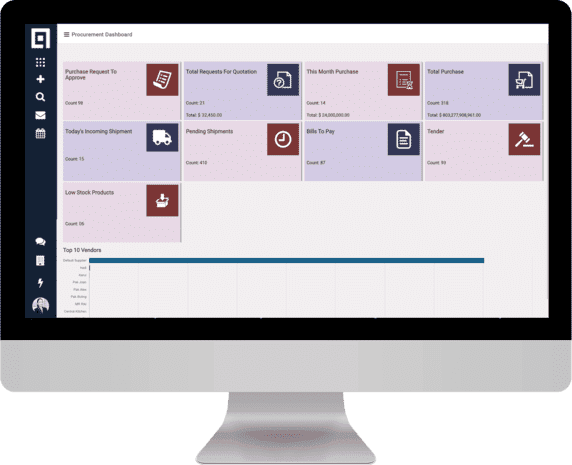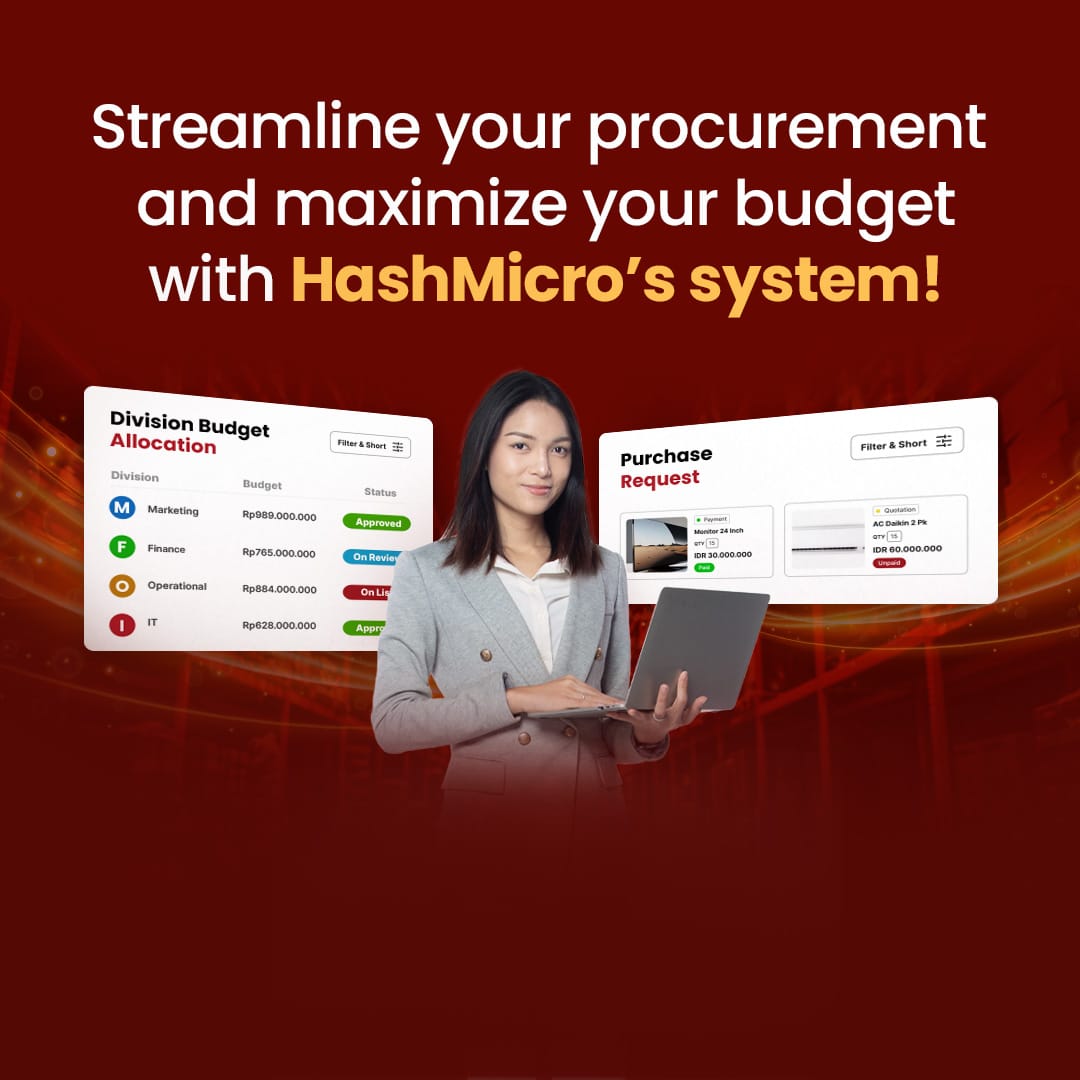The term “procurement” describes business operations or procedures for getting products or services from preferred vendors at the best prices. The main goal of the procurement process is finding the best resource deal. Among the things acquired are raw materials, equipment for the workforce, supplies, furniture, travel-related services, and a wide range of other things.
Each business defines procurement differently. Some businesses refer to it as issuing purchase orders and paying for them. On the other hand, other businesses see the procurement process as including every step of the procedure, from identifying company needs to finding suppliers and monitoring the delivery of items.
A company may really spend more on goods and services than it brings in. Clearly, this is an important step in understanding the supply chain since it helps businesses select reliable suppliers that can offer competitively priced goods and services to meet their needs. For instance, cutting purchasing costs will have a significant direct impact on the company’s profitability.
However, the supply chain may impact the company’s profitability and reputation if the purchase price is excessive. Cutting costs will improve a company’s procurement procedure. The company must also choose suppliers who meet the firm’s requirements for high-quality products and services and have the capacity to deliver regularly.
Table of Content:
Table of Content
Steps in the Procurement Process
There is no such thing as a “One Size Fits All” purchasing process. You must determine the steps that fit effectively based on your business’s needs and goals. Several procurement-related factors must be considered, some of which may not apply. Therefore, conducting a complete source-to-pay before initiating the process is essential.
Integrating a procurement ERP system can help tailor these steps to align with your business’s needs. A procurement ERP offers the flexibility and customization required to manage procurement tasks efficiently, ensuring that all aspects of the purchasing process are streamlined and cohesive.
To optimize your procurement workflow, follow these seven steps:
1. Identify the needs of all business unit
The first step in the procurement process is identifying and consolidating the requirements of all business divisions in a company. This gives insight into the spending categories and areas so that cost-saving opportunities can still be recognized through spend analysis.
Additionally, it assists the business’s budgeting procedures and future spending projections.
2. Identify and evaluate a list of suppliers
The next phase in the procurement cycle is to compile a list of potential vendors who could provide the goods and/or services after the business units have determined their requirements. This process uses simple web searches or formal procedures like RFPs, RFQs, and RFIs.
This step in the procurement process aims to evaluate potential vendors. After completing the assessment, the supplier who provides the greatest value at the best market price wins the contract.
3. Choose a supplier and negotiate contract terms
The procurement & purchasing contracting procedure starts once a provider has been chosen to meet a business’s needs. Contracting is essential for a business to create the most value and encourage supplier-buyer cooperation.
In this step of the procurement process, important criteria, including cost, the scope of the service, terms and conditions, delivery schedules, etc., are evaluated.
4. Raise a purchase requisition and release the purchase order
The next step is to issue a purchase requisition (PR) when a business completes its contract with a supplier. A PR contains details on the product or service, the cost and quantity, the provider, and the approval process.
After the finance team approves a PR, the purchase order (PO), which includes details such as the PO number, payment terms, supplier information, etc., is released to the supplier.
5. Complete the payment process upon receiving an invoice
After receiving a purchase order, the supplier delivers an invoice outlining the cost of the requested goods or services. The procurement team checks the invoice for authenticity with regard to quantity and quality when the business receives the PO and their invoice before releasing payment.
The payment is released before or after delivery, depending on the payment terms agreed upon by the company and its suppliers.
6. Receive and audit delivery of requested goods/services
The supplier provides the products or services based on payment and the contract conditions. Companies should conduct an audit after receiving goods to make sure the suppliers meet their quality standards.
The audit procedure should include studying the supplier’s records and examining the goods or services delivered on-site. The objective is to verify that the supplier has fulfilled all contractual obligations and that the goods or services are of the required quality.
7. Keep accurate records of vendor invoices
Properly storing invoices after receiving a delivery is critical. This will make it easier for the business to keep track of spending categories. Invoices can be kept in various ways, either online or physically in files.
Whatever method is selected, it is essential to store all invoices uniformly. This will make it easier to keep track of expenses efficiently and effectively.
After learning about some of the steps in the procurement process, you can click the banner below to start considering the price calculation provided by HashMicro. This will allow you to immediately learn about some of the benefits this vendor offers in the retail procurement process in your Singapore business.
How to Improve Procurement Process Using Procurement Process Software
Any business’s procurement procedure is essential, involving acquiring products and services from external vendors. To optimize the procurement process, both direct and indirect procurement, several steps should be taken.
First, create precise and detailed requirements for the products or services you need, which increases the likelihood of achieving your desired outcome.
Second, request quotes from various vendors to compare costs and select the one that best fits your business needs.
Finally, establish a solid contract with the vendor to protect your business in case of any issues with the goods or services provided.
Procurement analytics plays a crucial role in further enhancing the procurement process. By leveraging procurement analytics, businesses can gain insights into spending patterns, vendor performance, and potential cost-saving opportunities.
Several tools can be utilized to optimize the procurement process, with procurement management software being the most vital. This software enables businesses to monitor and optimize their procurement activities. Additionally, e-procurement platforms and source management systems are valuable tools that can further streamline procurement operation
For a comprehensive understanding of procurement systems, check out this article on Procurement System Features and Benefits, which details your business’s essential features and advantages.
Additionally, if you’re looking for the best software options available this year, explore best procurement software Singapore to find the right fit for your business needs.
How to Choose the Right Procurement Process for Your Business Solution
Quick implementation
Implementing a procurement solution is more difficult than it seems. Despite any technical difficulties, no one will initially embrace the change, especially if it is difficult to learn. The greatest and most appropriate procurement solution can assist in speeding up the implementation process so that it can go live in a matter of days, saving both time and money.
Instant customer support
Technical issues are all too common in any software. Make sure the seller provides timely, good customer service. Compare several providers based on their responsiveness, mean time to resolve support tickets, and availability of self-service tools like a current AI knowledge base.
Evaluate features and plan customizations
After taking a demo, start by listing every feature in your current procurement system. Separate necessary qualities from desirable ones. After this is done, discuss the requirement functionality. If the post-customization fee is reasonable, you can move forward with a purchase.
Choosing the right procurement software is crucial for optimizing these aspects. For detailed guidance on selecting the best procurement software, read our comprehensive article on Choosing the Right Procurement Software for Your Business.
Conclusion
Procurement is becoming a strategic activity with significant commercial influence. A crucial corporate requirement is a set of efficient and well-designed digital procurement processes. Transactional process automation is the core of a digital procurement strategy and provides access to high-impact technologies like ML and AI.
Tools, technologies, and procedures will continue to evolve. There are trends and circumstances that urge you to adapt. So, despite everything you’ve accomplished, try not to become too comfy. Continue to learn, and if required, make adjustments.
You may also use HashMicro’s Procurement Software to make buying for your business more efficient. You can manage all buy requests from every branch, better control procurement costs, and negotiate the best prices with vendors using just one system.






















































